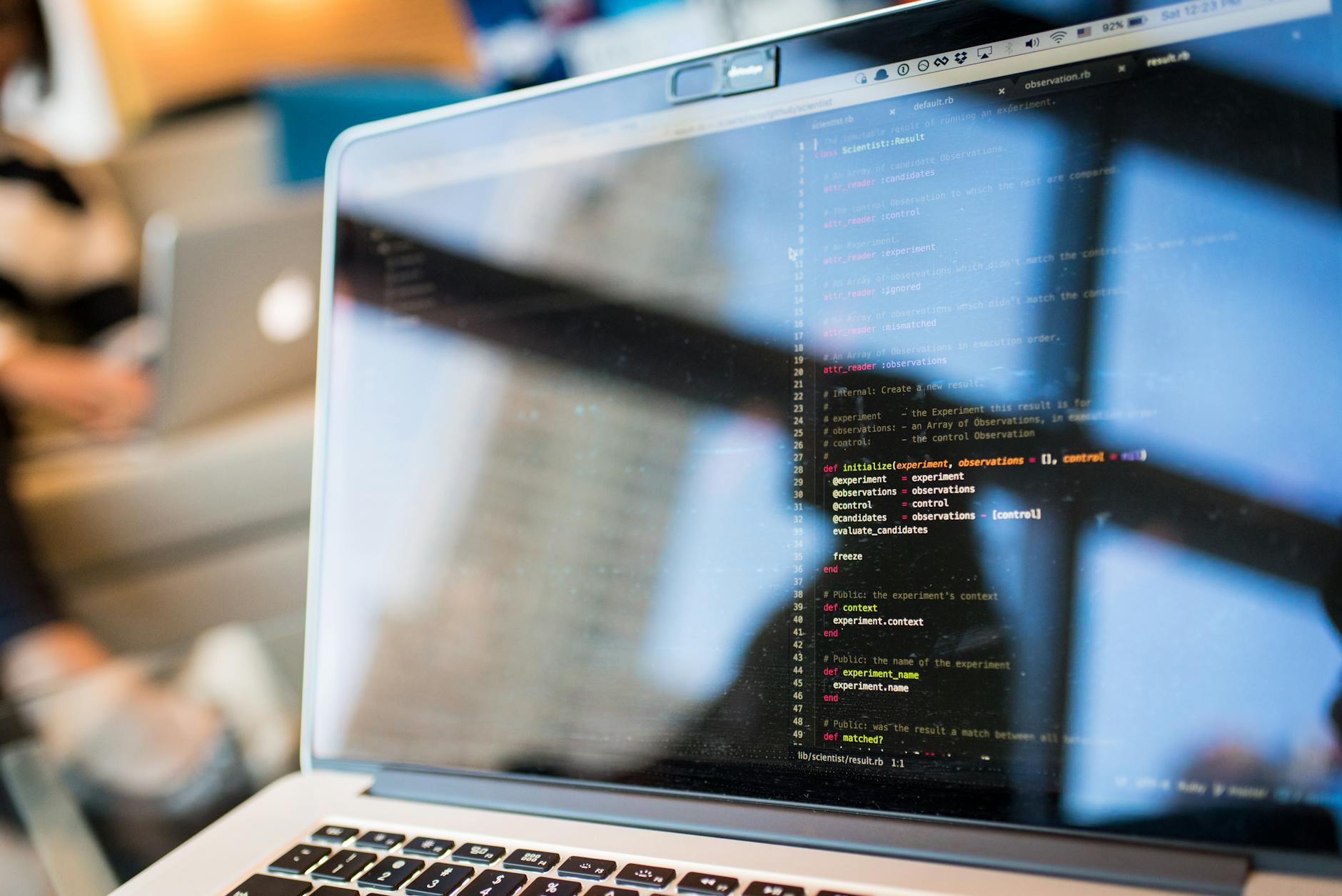A Diplomatic Gambit: Trump’s Claim of brokering Zelenskyy-Putin talks amid ongoing conflict
Amidst a backdrop of continued hostilities and international diplomacy, former US President Donald Trump has asserted that he is actively working to arrange a meeting between Ukrainian President Volodymyr Zelenskyy and Russian President Vladimir Putin. The claim comes in the wake of Trump’s engagements with European leaders at the White House.
The international community remains focused on the protracted conflict in Ukraine, with recent events highlighting both the persistent violence on the ground and the complex diplomatic maneuvers underway. In a significant development, former US President Donald Trump has stated his intention to facilitate a direct meeting between Ukrainian President Volodymyr Zelenskyy and Russian President Vladimir Putin, a move that has garnered considerable attention and speculation. This assertion follows Trump’s recent discussions with European leaders at the White House, suggesting a potential shift in diplomatic focus or at least an attempt by the former president to re-engage on the international stage with a high-stakes peace initiative.
The announcement, though ambitious, has been met with a spectrum of reactions, from cautious optimism to outright skepticism. Trump’s past approach to foreign policy, often characterized by direct, unconventional negotiation, positions this potential meeting as a departure from more traditional diplomatic channels. The veracity and potential impact of these claims are subjects of intense scrutiny, particularly given the deeply entrenched nature of the conflict and the significant geopolitical implications involved. As the world watches for further developments, understanding the context, analyzing the potential outcomes, and considering the various perspectives on this unfolding situation is paramount.
This article aims to provide a comprehensive overview of Trump’s recent statements, contextualize them within the broader framework of the Ukraine war, analyze the potential implications of such a meeting, and explore the various viewpoints surrounding this diplomatic gambit. We will delve into the background of the conflict, examine the details of Trump’s claims, and consider the challenges and opportunities that lie ahead.
Context & Background
The Russian invasion of Ukraine, which commenced in February 2022, has plunged Eastern Europe into a prolonged and devastating conflict. The war has resulted in a catastrophic humanitarian crisis, with millions displaced and thousands killed. International efforts to broker peace have thus far yielded limited success, with ongoing hostilities and deeply divergent objectives between Kyiv and Moscow presenting formidable obstacles.
Ukrainian President Volodymyr Zelenskyy has consistently advocated for the full restoration of Ukraine’s territorial integrity, including the return of Crimea and territories occupied since 2014. His government has emphasized the need for robust international support, including military aid and sanctions against Russia, to achieve a just and lasting peace. Zelenskyy has also been a vocal proponent of accountability for alleged Russian war crimes.
On the other side, Russian President Vladimir Putin has maintained that the “special military operation” is necessary to “demilitarize” and “denazify” Ukraine, asserting that the expansion of NATO poses a security threat to Russia. Moscow has also expressed concerns about the treatment of Russian-speaking populations in Ukraine. While Russia has engaged in various diplomatic discussions and proposed peace plans, these have generally not aligned with Ukraine’s core demands.
Previous attempts at negotiation have been fraught with difficulty. Early in the conflict, talks between Ukrainian and Russian delegations took place, but they ultimately broke down, with both sides blaming the other for the lack of progress. The international community, including the United States and European nations, has largely supported Ukraine, imposing extensive sanctions on Russia and providing significant military and financial assistance to Kyiv.
Against this backdrop of ongoing conflict and complex diplomatic efforts, Donald Trump’s assertion of actively setting up a meeting between Zelenskyy and Putin introduces a new and potentially disruptive element. Trump, during his presidency, pursued a more transactional and often unpredictable foreign policy. His stated desire to engage directly with both leaders, bypassing some of the more established diplomatic protocols, reflects his characteristic approach to international relations.
The timing of Trump’s announcement, following his talks with European leaders at the White House, suggests an effort to leverage any perceived influence he might still command on the international stage. The nature of these “talks with European leaders” remains somewhat opaque, but it is plausible that discussions revolved around the ongoing Ukraine crisis and potential pathways to de-escalation.
It is crucial to note the inherent complexities of any potential Trump-brokered negotiation. His past statements have sometimes been perceived as conciliatory towards Russia, raising concerns among some allies about his commitment to Ukrainian sovereignty. Conversely, proponents might argue that his direct, business-like approach could cut through diplomatic stalemates.
Furthermore, the summary notes a “Sketch: All smoke and no fire as Zelenskyy emerges unbruised after Trump meet.” This commentary suggests a degree of skepticism regarding the substance and outcome of any interaction between Trump and Zelenskyy, hinting at a perception that the event might be more symbolic or performative than genuinely impactful. This underlines the need for critical evaluation of Trump’s claims and their potential real-world consequences.
The article also highlights a tragic event: “A Russian drone attack on a five-storey apartment block in the Ukrainian city of Kharkiv early Monday killed five people and wounded more than a dozen others.” This grim reminder of the ongoing violence on the ground serves as a stark contrast to the diplomatic discussions. It underscores the urgent need for a resolution to the conflict, while also illustrating the human cost of continued hostilities. The details of the attack, which reduced part of the building to rubble and sparked fires, emphasize the indiscriminate nature of some of the attacks and the devastating impact on civilian populations.
Understanding these interwoven threads – the protracted war, the differing objectives of the key players, past diplomatic failures, Trump’s unique approach, and the continuing violence – is essential to properly analyze the significance and potential impact of his claims about facilitating a Zelenskyy-Putin meeting.
In-Depth Analysis
Donald Trump’s assertion of setting up a meeting between Ukrainian President Volodymyr Zelenskyy and Russian President Vladimir Putin is a significant claim that warrants careful dissection. To assess its potential impact and credibility, we must consider several facets: the nature of Trump’s diplomatic style, the current geopolitical landscape concerning the Ukraine conflict, the potential motivations behind such a move, and the likely challenges and outcomes.
Trump’s Diplomatic Style: Throughout his presidency, Donald Trump often eschewed traditional diplomatic norms, favoring direct, personal engagement with world leaders. He famously met with Kim Jong Un of North Korea, a move that broke decades of established protocol. His approach was often characterized by a belief that he, as an individual negotiator, could strike favorable deals by cutting out bureaucratic layers and engaging in face-to-face discussions. This style, while sometimes leading to unexpected breakthroughs, also generated considerable criticism for its unpredictability and potential to undermine established alliances and international institutions. His recent claim about brokering a Zelenskyy-Putin meeting aligns with this established pattern of direct engagement.
Geopolitical Landscape: The Ukraine war remains a central focus of international diplomacy, but consensus on a path forward is elusive. While Western nations broadly support Ukraine and continue to impose sanctions on Russia, the sustainability of this support, particularly in the face of potential political shifts in key countries, is a constant consideration. Russia, despite facing significant economic pressure and international isolation, has shown no indication of abandoning its objectives in Ukraine. President Putin has consistently framed the conflict as an existential struggle for Russia’s security interests. President Zelenskyy, on the other hand, remains steadfast in his commitment to Ukraine’s sovereignty and territorial integrity, making compromise on fundamental issues extremely difficult.
Motivations Behind the Claim: Several motivations could be driving Trump’s announcement. Firstly, it serves to reassert his presence and relevance on the global stage, particularly in an election year. By positioning himself as a potential peacemaker in a high-profile conflict, he can tap into a desire for stability and a resolution that many global citizens share. Secondly, it aligns with his long-standing narrative of being a decisive leader capable of achieving outcomes that others cannot. He may genuinely believe that his unique negotiating abilities can break the current deadlock. Thirdly, it could be a strategic move to differentiate himself from the current US administration’s approach to the conflict, potentially portraying their policies as ineffective. Finally, there’s the possibility of personal and political opportunism, aiming to capitalize on a situation that has captured global attention.
Potential Challenges and Outcomes:
Credibility and Authority: As a former president, Trump does not hold official diplomatic authority. For any meeting to be meaningful, both Zelenskyy and Putin would need to perceive value in engaging with him in this capacity. Zelenskyy’s government, while potentially open to any avenue for peace, would likely be wary of any proposal that compromises Ukraine’s sovereignty or territorial integrity. Russia’s willingness to engage with Trump would depend on whether they see an opportunity to advance their own interests, perhaps by creating divisions among Western allies or by presenting a narrative of Ukraine’s intransigence if a meeting fails.
Substance vs. Spectacle: The “sketch” commentary mentioned in the source summary, “All smoke and no fire as Zelenskyy emerges unbruised after Trump meet,” is a crucial insight. It suggests a perception that Trump’s diplomatic interventions can be more about public performance than substantive negotiation. A meeting without concrete progress or a clear roadmap could be counterproductive, potentially raising hopes only to dash them, or even legitimizing positions through the sheer act of a high-profile meeting without achieving tangible results.
Impact on Existing Diplomatic Efforts: Trump’s intervention, if it gains traction, could either complement or undermine existing diplomatic channels led by the UN, the EU, and individual nations. It could create confusion or present competing narratives, making it harder to build a unified international approach. Alternatively, if successful in bringing the parties together, it could provide a new impetus for negotiations.
The Ceasefire Question: The mention that Trump “tells Zelenskyy ceasefire not needed for Russia-Ukraine peace deal” is particularly telling. This suggests a potential divergence in his perceived strategy from the immediate priority of many international actors, which is often a humanitarian ceasefire. If Trump believes a peace deal can be forged without an initial ceasefire, this could indicate a willingness to prioritize a broader political settlement over immediate de-escalation, or it might reflect a misunderstanding of the foundational steps required for meaningful peace talks in such a protracted conflict.
The Drone Attack: The tragic drone attack in Kharkiv serves as a stark counterpoint to any diplomatic overtures. It highlights the grim reality on the ground, where civilian lives continue to be lost. Any diplomatic initiative must contend with the persistent violence and the human cost, making a ceasefire a critical prerequisite for any meaningful peace process from Ukraine’s perspective. Ignoring this reality or downplaying its importance in favor of a swift deal could be seen as a disregard for the ongoing suffering.
In conclusion, Trump’s claim represents a bold, albeit unconventional, diplomatic initiative. Its success hinges on his ability to genuinely bring the parties to the table and facilitate meaningful dialogue that respects Ukraine’s sovereignty. The skepticism surrounding his past approaches and the ongoing brutality of the war suggest that this is a high-risk, potentially high-reward gambit. The world will be watching to see if this is indeed a diplomatic breakthrough or another instance of “smoke and no fire.”
Pros and Cons
Donald Trump’s stated intention to arrange a meeting between Ukrainian President Volodymyr Zelenskyy and Russian President Vladimir Putin carries with it a complex set of potential advantages and disadvantages. Evaluating these points is crucial to understanding the potential impact of such an initiative.
Pros:
- Direct Engagement: Trump’s willingness to engage directly with both leaders bypasses some of the more traditional, and perhaps slower, diplomatic channels. His proponents argue that his personal negotiating style could cut through bureaucratic inertia and ideological gridlock, potentially leading to unexpected breakthroughs.
- Potential for a New Approach: The ongoing conflict has proven resistant to conventional diplomatic solutions. Trump’s unconventional approach might offer a fresh perspective or a different set of incentives that could shift the dynamics of the negotiations.
- Reducing Tensions: Any direct dialogue between the leaders of warring nations, even if preliminary, has the potential to de-escalate tensions and open avenues for communication that may have been previously closed. A direct meeting could provide a platform to understand each other’s red lines and potential areas of compromise.
- Focus on a Peace Deal: Trump’s assertion that a ceasefire is “not needed for Russia-Ukraine peace deal” suggests a focus on achieving a comprehensive resolution rather than interim measures. While controversial, this approach might appeal to those who believe that addressing the root causes of the conflict is paramount, even if it means navigating a more complex negotiation process.
- Leveraging Personal Relationships: Trump has historically prided himself on his ability to build personal relationships with world leaders, including Putin. If he can leverage any existing rapport, it might provide him with unique access and influence that traditional diplomats may not have.
Cons:
- Lack of Official Mandate: As a former president, Trump does not currently hold any official diplomatic authority. This means that any agreement or understanding reached would not be binding on governments and would require formal ratification through established diplomatic channels.
- Undermining Existing Efforts: Trump’s initiative could potentially undermine or complicate ongoing diplomatic efforts by established international bodies and allied nations. It could create competing narratives and dilute the unified front that many countries have tried to maintain in addressing the conflict.
- Skepticism of Substance: As indicated by the “sketch” commentary, there is a strong possibility that such a meeting could be perceived as more of a media spectacle than a genuine peace-building exercise. If it fails to produce tangible results, it could lead to disillusionment and further entrench the conflict.
- Potential for Miscalculation: Trump’s negotiating style is often characterized by impulsiveness. In a high-stakes geopolitical situation like the Ukraine war, miscalculations could have severe consequences, potentially exacerbating the conflict or leading to unintended escalations.
- Perceived Bias: Trump’s past public statements and his approach to foreign policy have sometimes led to perceptions of him being more accommodating towards Russia. This could create distrust among Ukraine and its allies, making them hesitant to engage with his initiative.
- Ignoring Precedent for Peace: The assertion that a ceasefire is not needed for a peace deal is a significant departure from established norms in conflict resolution. Ceasefires are typically seen as essential first steps to halt the immediate violence and create a safe environment for substantive negotiations. Bypassing this could be seen as overlooking the immediate humanitarian crisis and the practicalities of achieving lasting peace.
- Focus on Personal Deal-Making: There’s a risk that Trump’s primary motivation might be to secure a personal diplomatic victory, potentially at the expense of a sustainable and just peace for Ukraine, which includes respect for its sovereignty and territorial integrity.
The success or failure of Trump’s purported diplomatic efforts will largely depend on the willingness of both Zelenskyy and Putin to engage meaningfully, the perceived benefit they see in such a meeting, and whether Trump can translate personal diplomacy into concrete progress towards de-escalation and a lasting resolution.
Key Takeaways
- Former US President Donald Trump claims to be arranging a meeting between Ukrainian President Volodymyr Zelenskyy and Russian President Vladimir Putin, following discussions with European leaders.
- This assertion reflects Trump’s characteristic direct and unconventional approach to diplomacy.
- The Ukraine war remains a complex and deeply entrenched conflict, with significant humanitarian consequences and divergent objectives between Ukraine and Russia.
- Previous peace initiatives have struggled to achieve lasting success.
- Trump’s potential involvement could be seen as either a disruptive force that undermines existing diplomatic efforts or a new avenue for dialogue.
- There is skepticism regarding the substance of Trump’s interventions, with commentary suggesting a potential for “smoke and no fire.”
- Trump’s view that a ceasefire is “not needed for Russia-Ukraine peace deal” contrasts with conventional conflict resolution approaches, which often prioritize de-escalation.
- A tragic Russian drone attack on a Kharkiv apartment block, killing five and wounding over a dozen, underscores the ongoing violence on the ground and the humanitarian cost of the conflict.
- The effectiveness of Trump’s initiative will depend on the willingness of both Zelenskyy and Putin to engage, the perceived value of the meeting, and whether it leads to tangible progress rather than just a high-profile event.
Future Outlook
The future implications of Donald Trump’s claims regarding a Zelenskyy-Putin meeting are multifaceted and subject to considerable uncertainty. Several potential trajectories could unfold, each with its own set of consequences for the ongoing conflict in Ukraine and the broader geopolitical landscape.
One immediate possibility is that Trump’s statement may simply be a political maneuver, designed to garner attention and project an image of decisive leadership, without any concrete plans for a meeting actually materializing. In this scenario, the announcement would fade into the background, leaving the status quo of the conflict and existing diplomatic efforts largely unchanged. The “sketch” commentary about “smoke and no fire” certainly lends credence to this interpretation.
Alternatively, Trump might genuinely attempt to facilitate such a meeting. If successful in bringing the two leaders to the same table, the outcomes could range widely. A highly optimistic scenario would see the meeting spark a genuine de-escalation, leading to renewed negotiations with a greater chance of success, perhaps under Trump’s unique mediation. This would require both Zelenskyy and Putin to see strategic value in engaging directly with Trump and to be willing to make concessions that could lead to peace.
However, a more probable outcome, given the entrenched positions of both sides and the deep mistrust that exists, is that a meeting, if it occurs, might not yield significant breakthroughs. The statement that Trump believes a ceasefire is “not needed for Russia-Ukraine peace deal” is a crucial indicator here. It suggests a potential focus on a grand bargain or a political settlement that could overlook the immediate humanitarian imperative of halting violence. This could lead to frustration and a backlash if the meeting is perceived as legitimizing aggression without addressing the ongoing suffering, as tragically highlighted by the Kharkiv drone attack.
The involvement of a former US president also introduces a complex dynamic into the existing international coalition supporting Ukraine. While some European leaders might be open to exploring all avenues for peace, others could view Trump’s initiative with suspicion, fearing that it could undermine their coordinated efforts, dilute sanctions, or lead to outcomes that are not aligned with Ukraine’s territorial integrity and sovereignty. This could create divisions within the Western alliance, a scenario that Russia might find advantageous.
Furthermore, the timing of such potential discussions is critical. If Trump’s claims gain momentum during a period of intense fighting or significant geopolitical shifts, the pressure on both leaders to engage might increase. Conversely, if the conflict is at a relative lull, the impetus for such a high-stakes meeting might be less pronounced.
The future outlook also depends on the US domestic political context. With a presidential election on the horizon, Trump’s actions and statements are inherently intertwined with his political aspirations. Any diplomatic initiative he pursues will likely be scrutinized through this lens, potentially affecting its credibility and the willingness of other actors to engage with it.
Ultimately, the path forward is contingent upon a delicate interplay of political will, strategic calculations, and the ever-present realities of the conflict on the ground. While Trump’s assertion offers a potential, albeit uncertain, new avenue, the deeply ingrained challenges of the Ukraine war suggest that any resolution will likely be a long and arduous process, requiring sustained diplomatic effort and a commitment to core principles of international law and human rights.
For official references and updates on the Ukraine war, readers are encouraged to consult:
- United Nations – Ukraine: Key Information
- NATO – Russia’s war against Ukraine
- European Union – Eastern Partnership
- U.S. Department of State – Bureau of European and Eurasian Affairs
Call to Action
The unfolding diplomatic landscape surrounding the Ukraine conflict demands informed engagement from the global community. While former President Trump’s claims of facilitating a Zelenskyy-Putin meeting present a new dynamic, it is crucial for citizens to remain discerning and to advocate for peace processes that uphold principles of international law, sovereignty, and human rights.
We encourage you to:
- Stay Informed: Continuously seek out credible and diverse sources of information regarding the conflict and diplomatic efforts. Understand the nuances of the situation and avoid falling prey to sensationalism or misinformation.
- Support Humanitarian Efforts: The ongoing violence, as exemplified by the tragic drone attack in Kharkiv, necessitates continued support for humanitarian organizations working on the ground to provide aid and assistance to affected populations.
- Advocate for Diplomacy: While new diplomatic avenues are explored, it is vital to support established international frameworks and organizations that are working towards a peaceful resolution. Contact your elected officials and express your support for diplomatic solutions that prioritize de-escalation and respect for international law.
- Promote Understanding: Engage in respectful dialogue with others about the complexities of the conflict. Fostering greater understanding can help to build a more informed and empathetic global response.
- Hold Leaders Accountable: Whether through voting, advocacy, or public discourse, ensure that leaders are held accountable for their commitments to peace and for their actions that impact global stability and human well-being.
The path to peace in Ukraine is fraught with challenges, but active and informed participation from citizens worldwide can contribute to a more just and lasting resolution.









